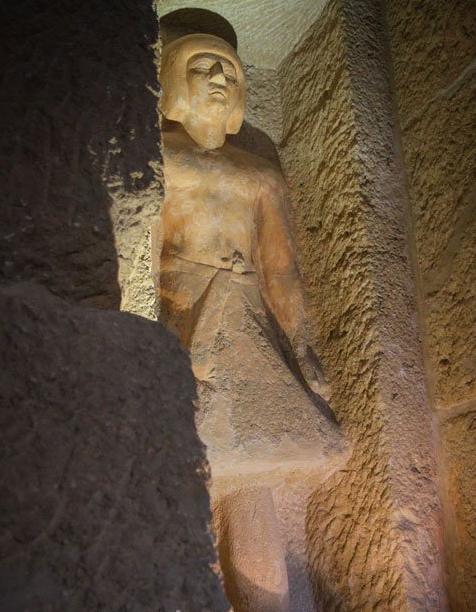
[Credit: The Cairo Post]
Started in 2010, the renovation of the two tombs resumed after a three-year hiatus due to the political turmoil that followed the January 25 Revolution, head of the Projects Department at the Antiquities Ministry Waad Allah Abul Ela told The Cairo Post Tuesday.
According to Abul Ela, “The restoration work on the two tombs included cleaning and reinforcing walls and installing lighting and ventilation systems. New ceilings and roofs have been added as well as wooden floor coverings.”
According to the Antiquities Minister Mamdouh el-Damaty, “The first tomb belonged to Imery, a high priest and administrative overseer of the royal court during the reign of Pharaoh Khufu (2589 B.C.-2566 B.C.) while the second belonged to Neferbau Ptah, Imery’s eldest son who was an overseer of the royal estates and a superintendent of the royal palace during the 5th Dynasty (2494 B.C.-2345 B.C.)

The four-year renovation was carried out under the supervision Supreme Council of Antiquities, said Damaty.
“The restoration work in Imery’s tomb included the removal of modern graffiti left by visitors on the walls of the tomb—particularly in the burial chamber—along with the removal of the old finishing mortar, which was falling from the walls,” Abul Ela said, adding that new mortar was then applied to the walls.
Located in the southwestern corner of the western necropolis at Giza, the tomb of Imery includes a number of vividly colored paintings covering the walls representing most of the practices of Imery’s everyday life with his family, archaeologist Sherif el-Sabban told The Cairo Post Tuesday.

According to Abul Ela, the tomb of Neferbau Ptah, which was unearthed in 1925, is badly damaged “due to the poor condition of the rock from which it was carved in the cliff and also due to the old-fashioned sanitation system installed in an unscientific method in the nearby Nazlet al-Samman suburb.”
“The renovation work in this tomb included restoring and strengthening the paintings and fixing the fading colors,” he added.
Neferbau Ptah’s tomb comprises five rooms and a crypt along with a life size rock carved statue in the western wall, Sabban said, adding that “the harvest scenes depicted at the tomb’s eastern wall are the most beautiful of the drawings in the tomb.”
Author: Rany Mostafa | Source: The Cairo Post [April 29, 2015]